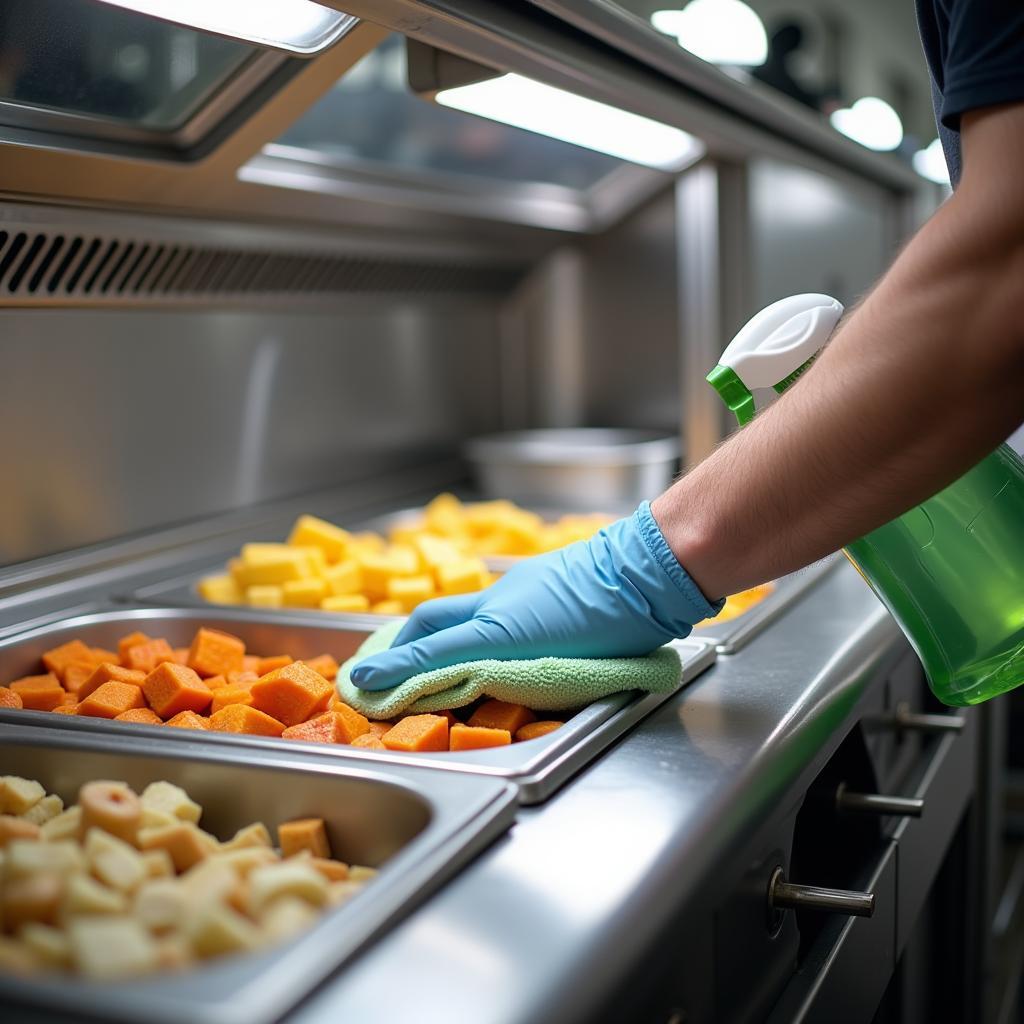Commercial food warmers are essential for any food service business looking to maintain food quality, safety, and customer satisfaction. Whether you’re running a restaurant, catering event, or food truck, these appliances play a vital role in keeping your culinary creations at the perfect serving temperature. This guide explores the world of commercial food warmers, delving into their various types, benefits, and how to choose the perfect one for your needs.
Types of Commercial Food Warmers
From buffet lines to fast-food counters, different food types and service styles require specific warming solutions. Here’s a breakdown of common commercial food warmer types:
- Dry Heat Food Warmers: These use heated air to maintain food temperature, making them ideal for items like breads, pastries, and fried foods. They often feature adjustable thermostats for precise temperature control.
- Moist Heat Food Warmers: Perfect for soups, stews, and sauces, these warmers utilize steam or hot water to keep food moist and prevent it from drying out.
- Soup Warmers: Specifically designed for soups and other liquids, these warmers come in various sizes and styles, including countertop and drop-in models.
- Hot Food Display Cases: Combining warming functionality with an attractive display, these units are excellent for showcasing prepared foods while keeping them at optimal temperature. They’re commonly used in buffets, cafeterias, and convenience stores.
- Heating Lamps: These offer a versatile solution for keeping food warm on serving lines or buffet tables. They use infrared heat to maintain temperature without drying out the food.
Benefits of Using a Commercial Food Warmer
Investing in a commercial food warmer provides numerous advantages for your food service business:
- Maintaining Food Quality: Consistent temperature control prevents food from spoiling and preserves its flavor and texture.
- Enhanced Food Safety: Warmers help maintain food at safe temperatures, reducing the risk of bacterial growth and foodborne illnesses.
- Improved Efficiency: Warmers allow you to prepare food in advance, streamlining service and reducing wait times for customers.
- Increased Sales: Attractive display warmers can entice customers and boost impulse purchases.
- Versatility: Different types of warmers cater to various food items and service styles, ensuring you have the right tool for the job.
Choosing the Right Commercial Food Warmer
Selecting the appropriate warmer depends on several factors:
- Type of Food: Consider the texture and moisture content of the food you’ll be warming.
- Volume of Food: Choose a warmer with a capacity that matches your serving needs.
- Space Availability: Countertop, freestanding, and built-in models are available to suit different kitchen layouts.
- Budget: Warmers range in price, so consider your budget constraints.
- Features: Look for features like adjustable thermostats, timers, and easy-to-clean surfaces.
How to Maintain Your Commercial Food Warmer
Proper maintenance ensures the longevity and efficiency of your warmer:
- Regular Cleaning: Clean the warmer thoroughly after each use, following the manufacturer’s instructions.
- Check Temperature Accuracy: Regularly calibrate the thermostat to ensure accurate temperature control.
- Inspect for Damage: Look for any signs of wear and tear and address them promptly.
 Cleaning a commercial food warmer
Cleaning a commercial food warmer
What is the Ideal Temperature for a Commercial Food Warmer?
Most hot foods should be held at or above 140°F (60°C) to prevent bacterial growth.
Quote from Michael Smith, Executive Chef at The Culinary Institute: “Maintaining proper food temperatures is crucial not just for safety, but also for preserving the quality and integrity of your dishes. A commercial food warmer is a chef’s best friend in this regard.”
Are Commercial Food Warmers Energy Efficient?
Many modern commercial food warmers are designed with energy efficiency in mind, utilizing features like insulated walls and efficient heating elements.
Quote from Sarah Jones, Food Safety Consultant: “Investing in an energy-efficient commercial food warmer can not only save you money on utility bills but also contribute to a more sustainable operation.”
 Energy-efficient commercial food warmer
Energy-efficient commercial food warmer
Conclusion
Commercial food warmers are a vital investment for any food service establishment. Choosing the right warmer and maintaining it properly will ensure your food remains hot, delicious, and safe for your customers, contributing to a successful and thriving business.
FAQ
- What are the different types of commercial food warmers?
- What are the benefits of using a commercial food warmer?
- How do I choose the right commercial food warmer?
- How do I maintain my commercial food warmer?
- What is the ideal temperature for a commercial food warmer?
- Are commercial food warmers energy efficient?
- Where can I buy commercial food warmers?
Other Helpful Resources:
- Explore our blog post on food safety guidelines for restaurants.
- Learn more about different types of commercial kitchen equipment.
When you need support, please contact us by Phone: 02437655121, Email: minacones@gmail.com or visit our address: 3PGH+8R9, ĐT70A, thôn Trung, Bắc Từ Liêm, Hà Nội, Việt Nam. We have a 24/7 customer service team.